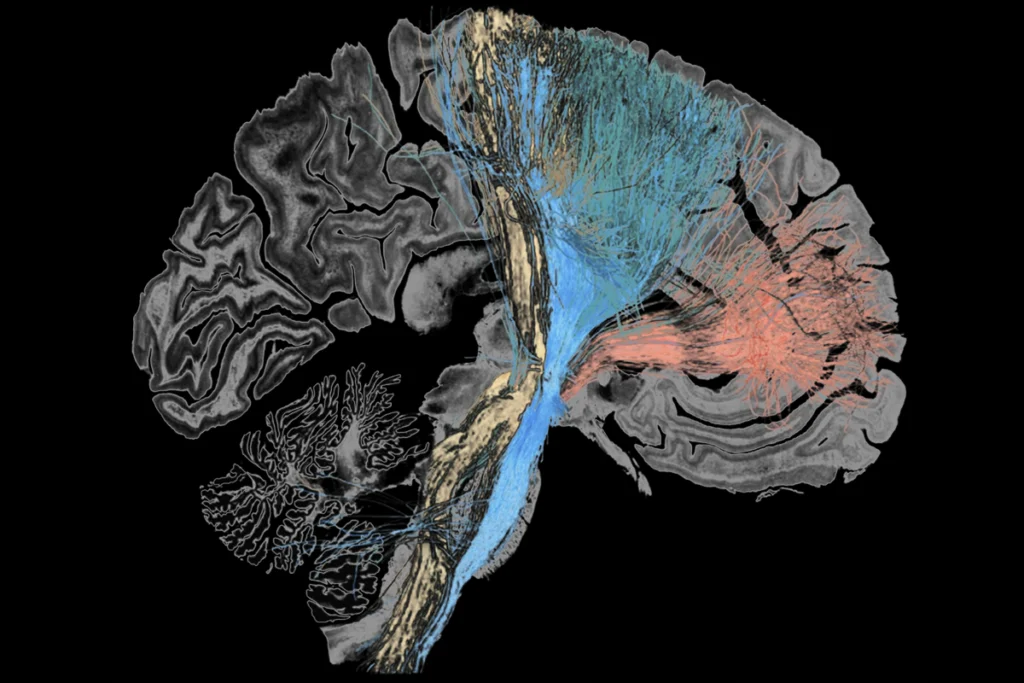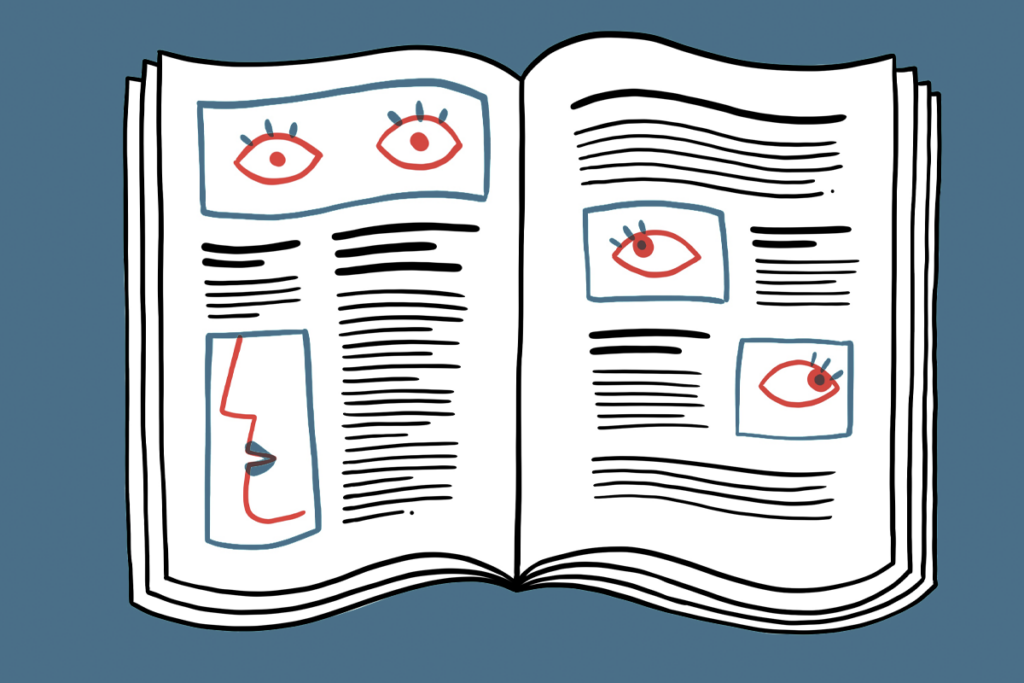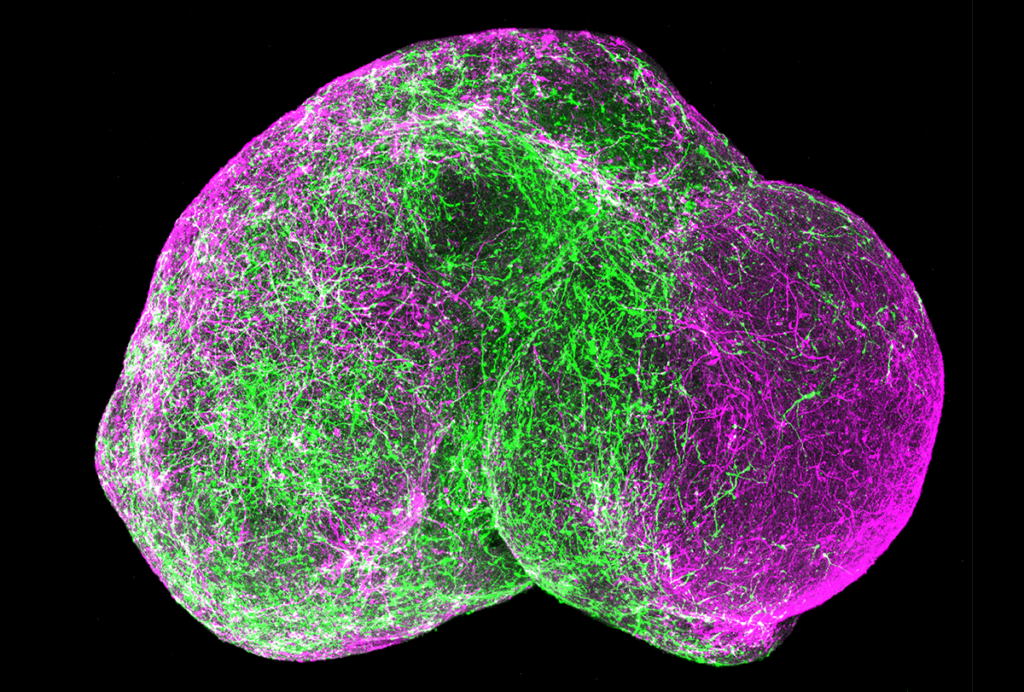Deep brain stimulation
Recent articles
Drafting a ‘dysfunctome’: Faulty connections to subthalamic nucleus characterize disparate brain disorders
Different circuits between the millimeters-wide structure and the cortex go awry in Tourette syndrome, obsessive-compulsive disorder, dystonia and Parkinson’s disease, a new study of human brain scans suggests.

Drafting a ‘dysfunctome’: Faulty connections to subthalamic nucleus characterize disparate brain disorders
Different circuits between the millimeters-wide structure and the cortex go awry in Tourette syndrome, obsessive-compulsive disorder, dystonia and Parkinson’s disease, a new study of human brain scans suggests.
Explore more from The Transmitter
It’s time to examine neural coding from the message’s point of view
In studying the brain, we almost always take the neuron’s perspective. But we can gain new insights by reorienting our frame of reference to that of the messages flowing over brain networks.
It’s time to examine neural coding from the message’s point of view
In studying the brain, we almost always take the neuron’s perspective. But we can gain new insights by reorienting our frame of reference to that of the messages flowing over brain networks.
Autism traits, mental health conditions interact in sex-dependent ways in early development
Here is a roundup of autism-related news and research spotted around the web for the week of 31 March.

Autism traits, mental health conditions interact in sex-dependent ways in early development
Here is a roundup of autism-related news and research spotted around the web for the week of 31 March.
Organoids and assembloids offer a new window into human brain
These sophisticated 3D cultures reveal previously inaccessible stages of human brain development and enable the systematic study of disease genes.

Organoids and assembloids offer a new window into human brain
These sophisticated 3D cultures reveal previously inaccessible stages of human brain development and enable the systematic study of disease genes.